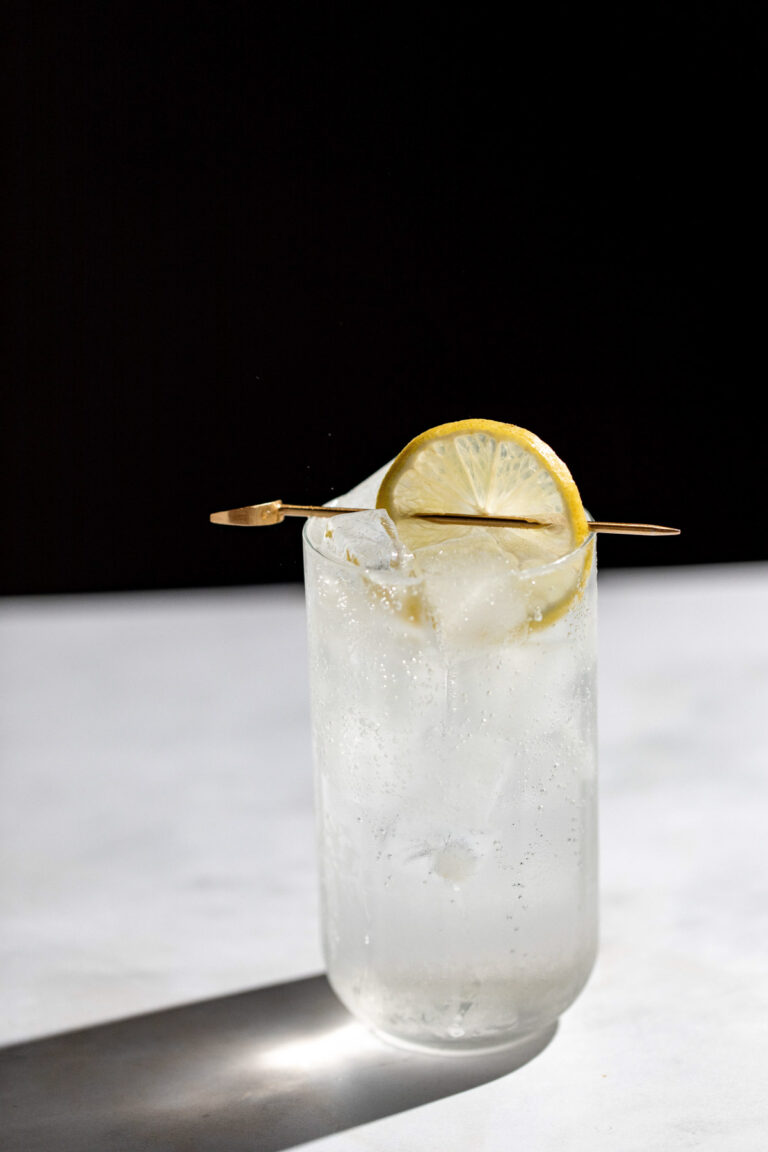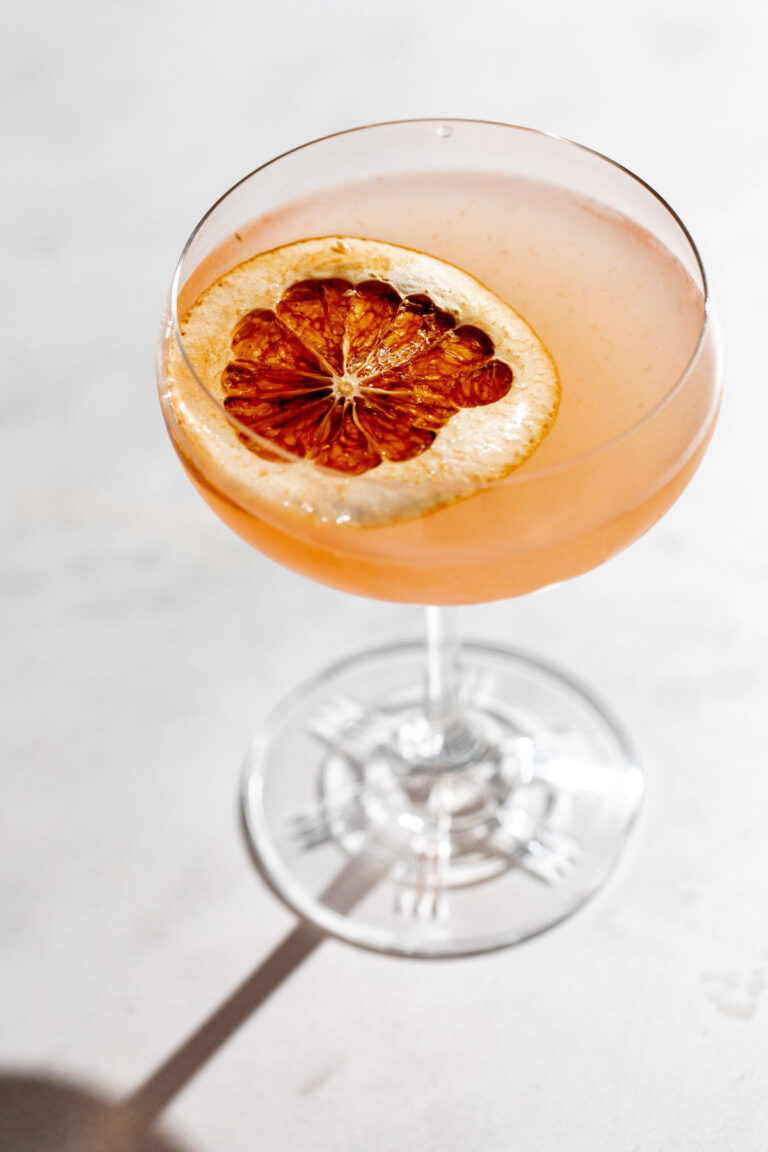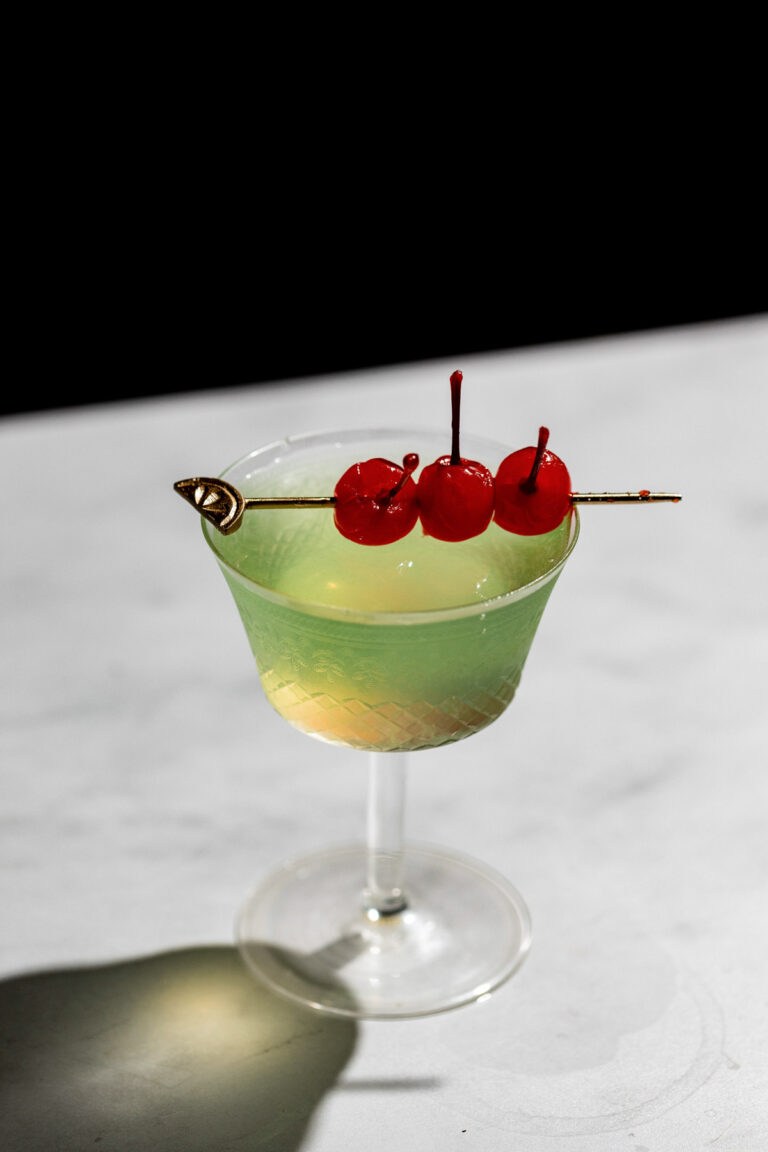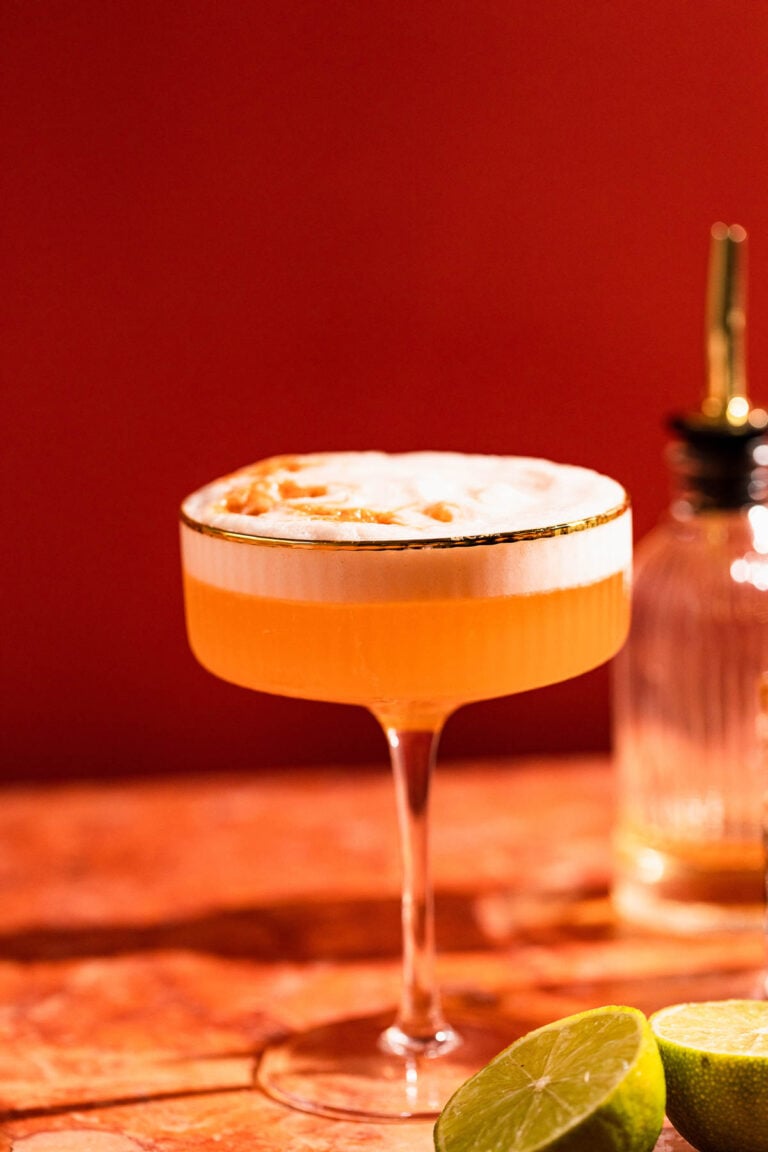Seeking to make the perfect dry martini at home like they serve at top cocktail lounges? Let us guide you through crafting this iconic and sophisticated sipper. Our time-honored formula delivers an exceptionally smooth and crisp martini every time.
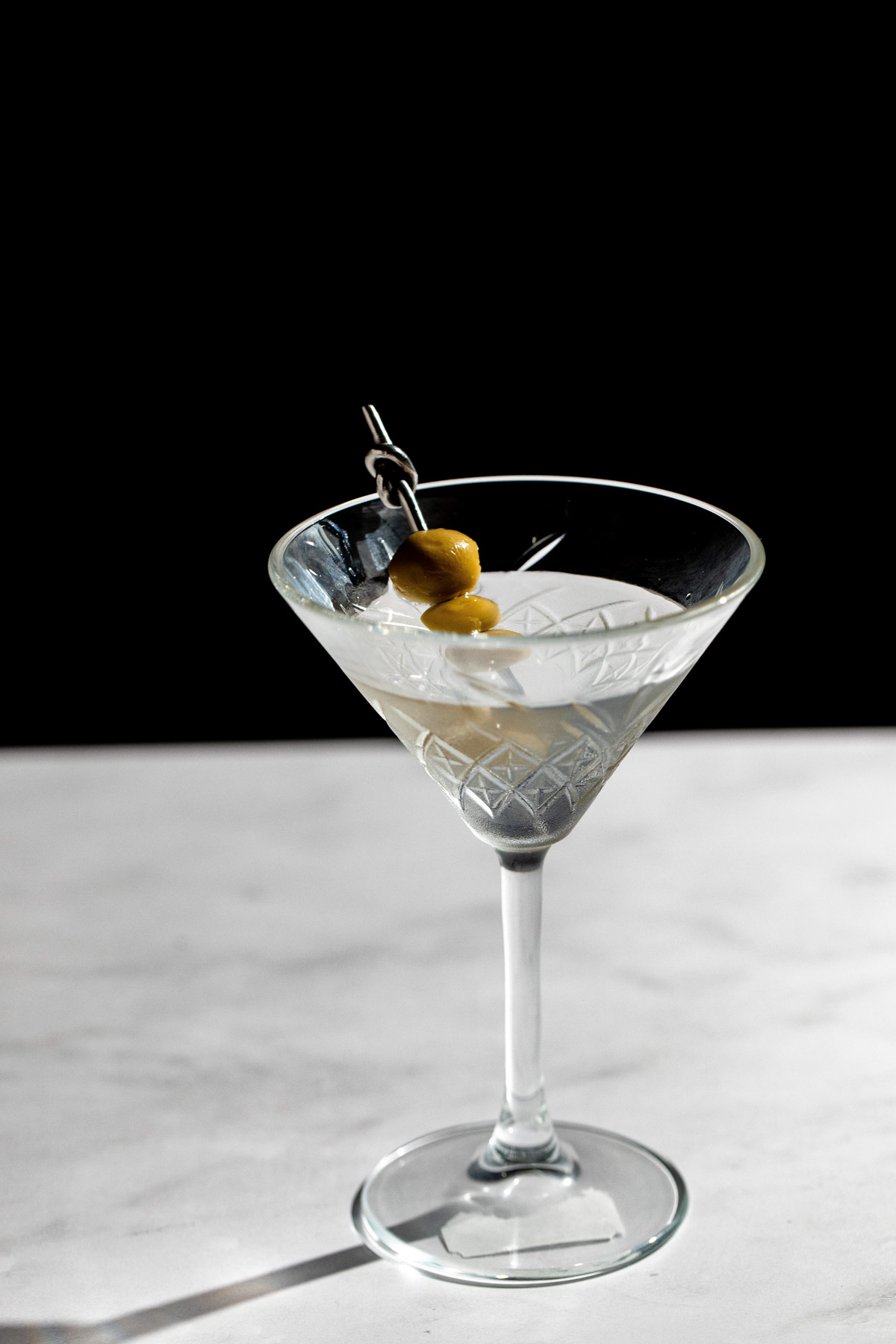
Looking for the perfect martini recipe?
This recipe unlocks the true essence of the drink – a dry masterpiece made with gin instead of vodka and will make you feel like you stepped out of a classic movie once you master it.
The martini is a drink as timeless and sophisticated as a perfectly tailored tuxedo. It’s graced the hands of silver screen legends and literary icons, forever linked with the steely gaze of James Bond (though rumor has it, even Winston Churchill preferred a touch more vermouth than our martini-loving friend).
But for the discerning martini drinker, the proper martini is a thing of exquisite dryness, a delicate blend of botanical gin, and the subtlest kiss of vermouth. It’s a dry cocktail for martini purists who love classic cocktails with a bite.
Watch 🎥 How to Make a Dry Martini with Gin
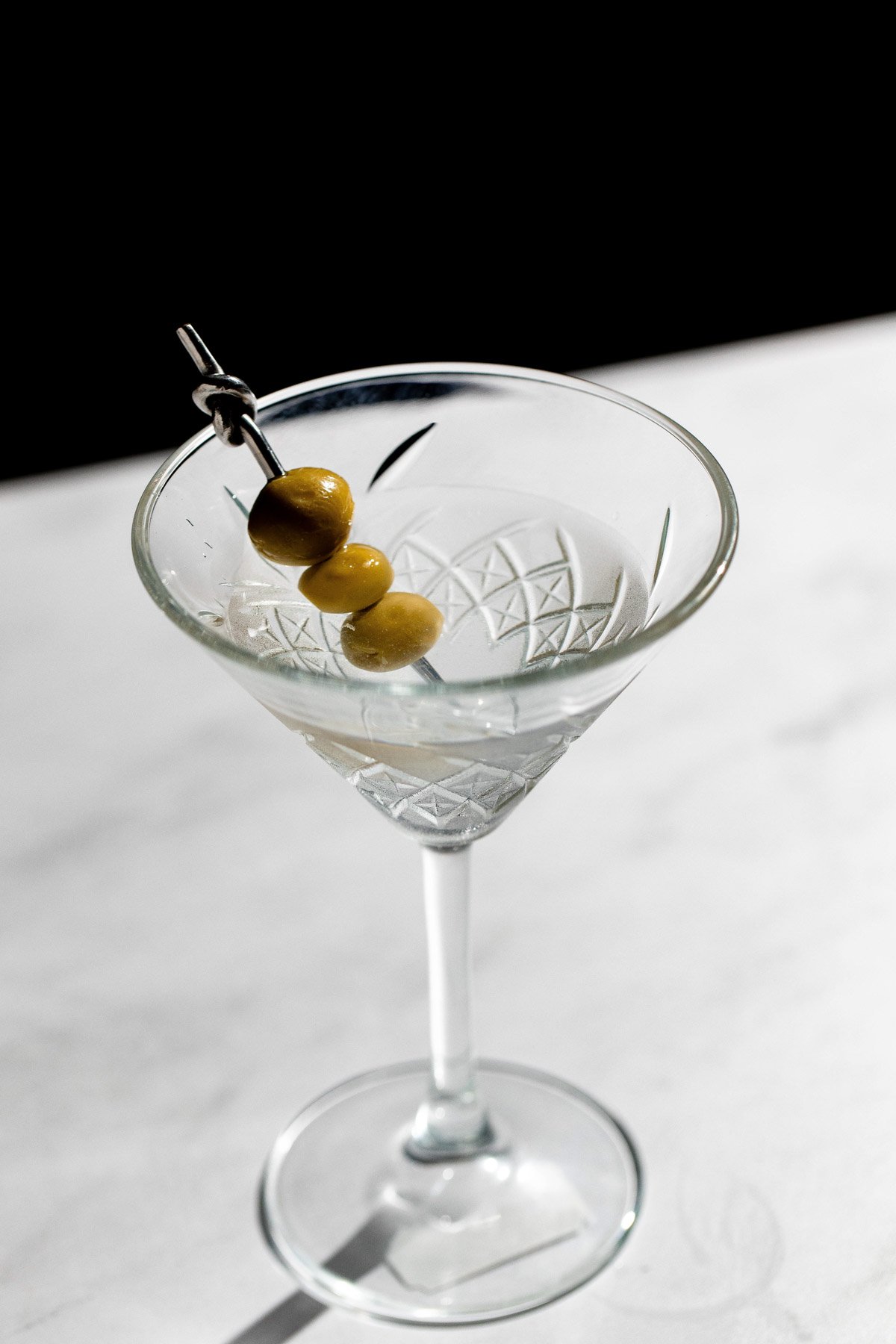
What Is a Dry Martini?
The martini exudes timeless elegance. This iconic drink has become synonymous with sophistication, boasting a history as rich and diverse as the personalities who have enjoyed it.
The History of the Martini Cocktail
Its history, as intriguing and diverse as the personalities who have enjoyed it, stretches back to the 19th century. From Winston Churchill’s rumored preferences to James Bond’s iconic order, the martini symbolizes luxury and good taste.
The exact beginnings of the martini remain shrouded in mystery, with several competing stories adding to the cocktail’s allure. One theory suggests it evolved from a drink called the Martinez, which is possibly linked to Manhattan. Another claims the Marguerite, a French vermouth-based concoction, might be the true ancestor. Regardless of its origin, the modern martini is undeniably a descendant of these early cocktails.
Over time, the martini shed its sweetness, morphing into the drier version we recognize today. Even in its drier form, the original recipe used equal parts gin and vermouth. Because of prohibition, people relied on poor-quality gin to craft their drinks, further influencing the drink’s evolution. Due to the harsh gin, vermouth became a way to mask unpleasant flavors, similar to honey and lemon juice in a Bees Knees cocktail. Eventually, the use of vermouth gradually declined during World War II when obtaining it became more difficult.
Martinis in Culture
Famous figures like Ernest Hemingway and Winston Churchill left their mark on the martini’s legacy. Hemingway favored a very dry version, while Churchill supposedly advocated for a “bow in the direction of France” with a minimal amount of vermouth. The fictional character James Bond also played a role in popularizing the martini, introducing the Vesper variation and sparking the debate between shaken versus stirred preparation.
The Modern Martini
The rise of vodka in the mid-20th century presented another twist. While gin remains the preferred choice for purists, vodka’s popularity led to the vodka martini, further adding to the drink’s versatility. However, gin is preferred due to its botanical essence, which is perfect for a strong drink like a martini or even a more subtle drink like an aviation cocktail.
Martini Variations
Beyond the classic variations, a world of martini experimentation has emerged. From the classic garnish options of olive or lemon twist to adding olive brine for a dirty martini or cocktail onions like a Gibson cocktail, bartenders continue to find new ways to put their own spin on this iconic drink. Dessert martinis, like a chai espresso martini or a peppermint Pattie martini, have emerged, putting a sweet spin on the classic martini.
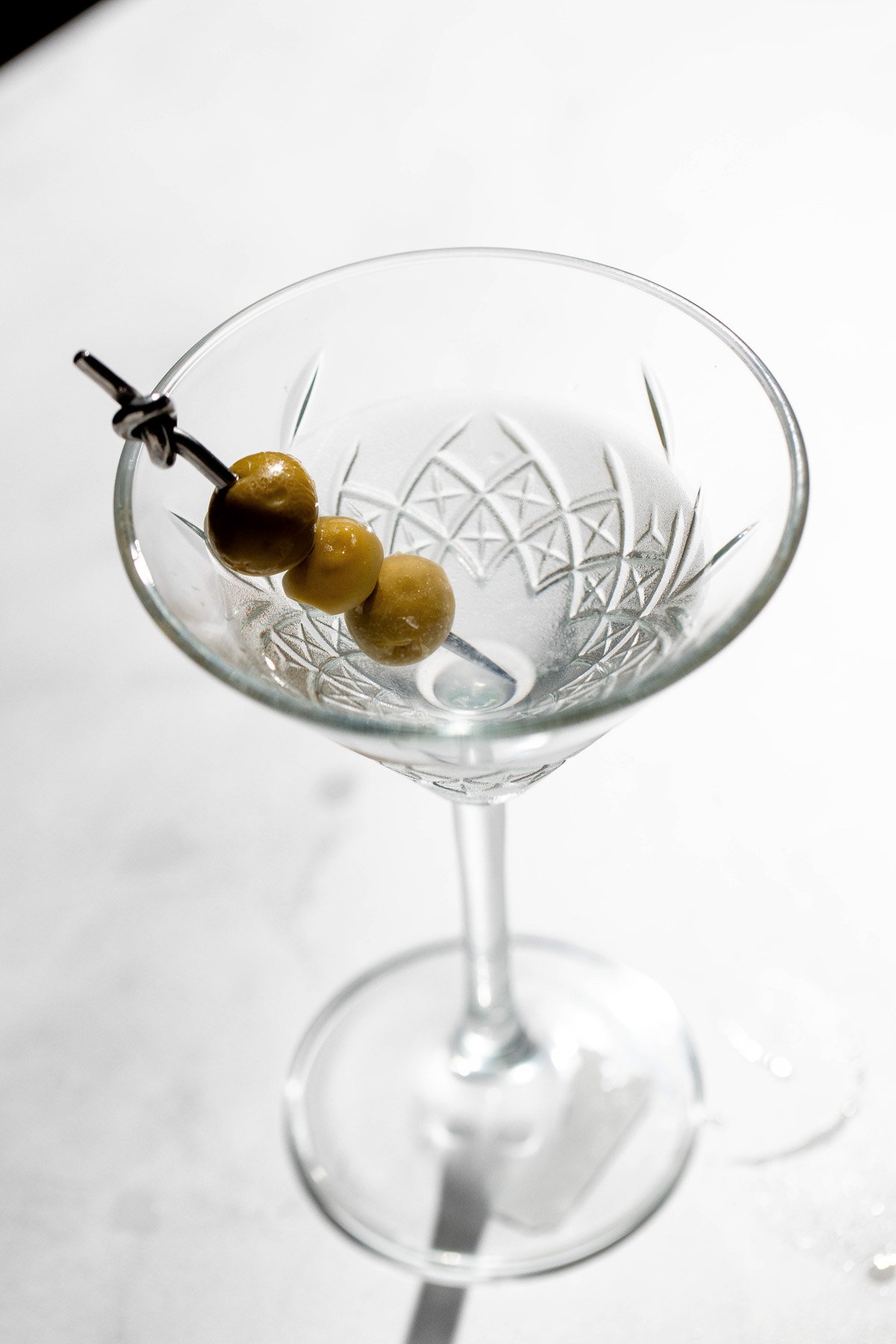
What you’ll love about this recipe:
What You Need to Make a Dry Gin Martini
How to Make a Classic Dry Martini
- Add ice to a mixing glass or cocktail shaker, and add gin and vermouth.
- Stir until chilled. That’s right, no shaking.
- Strain into a chilled martini glass and serve with green olives.
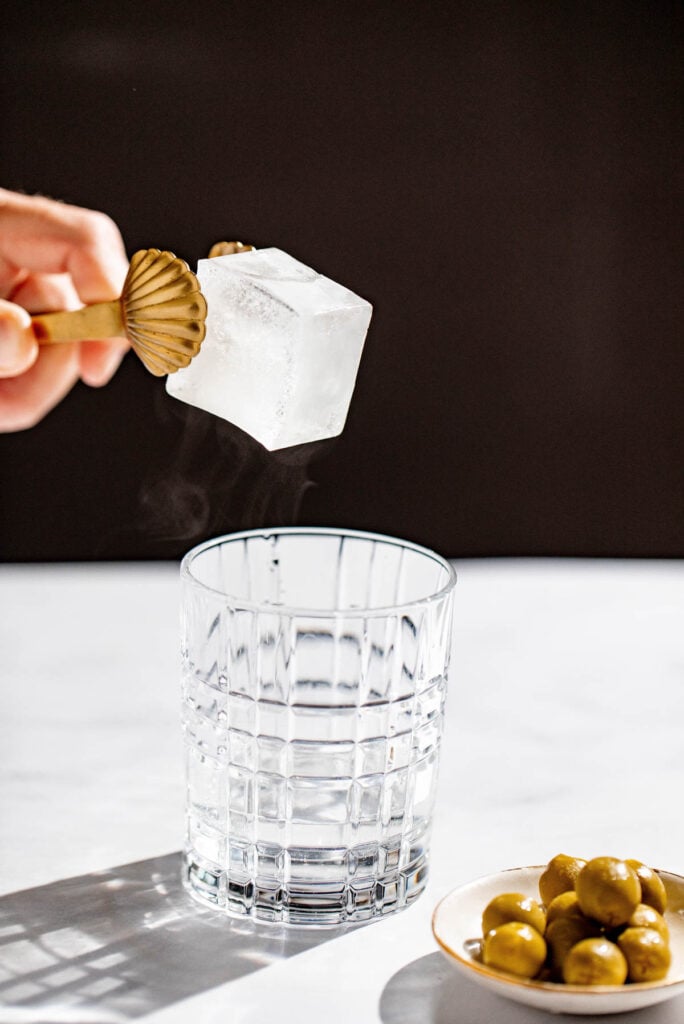
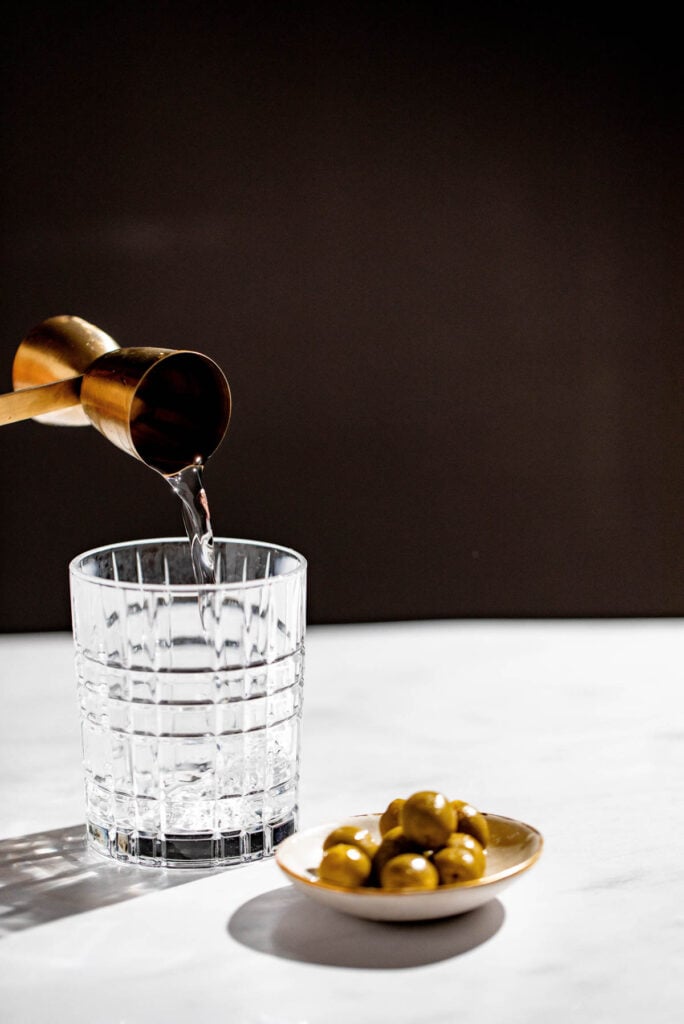
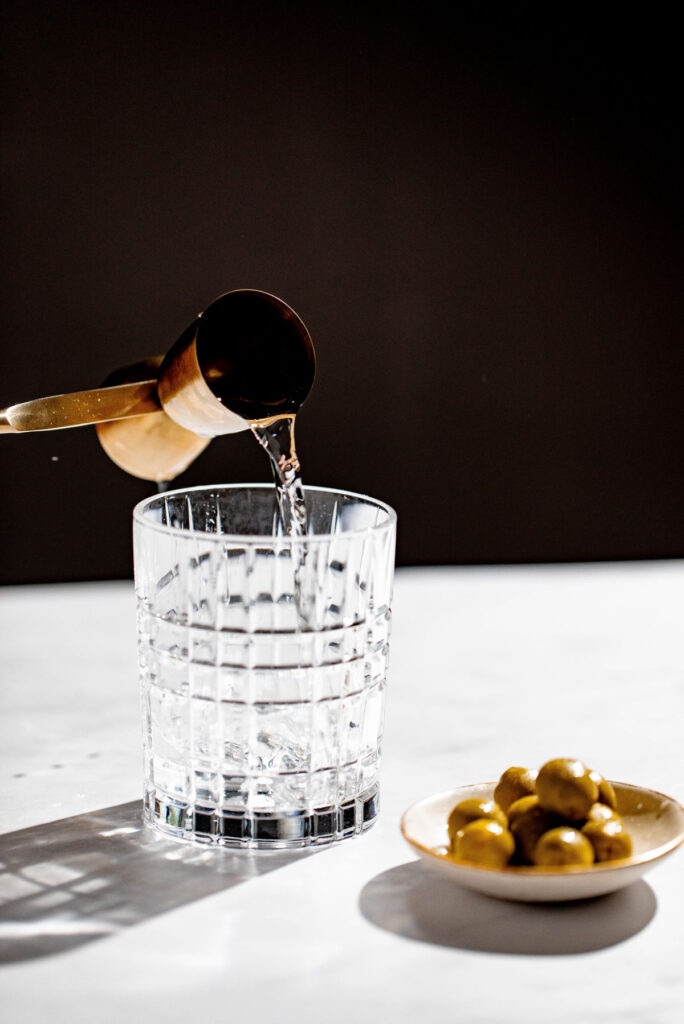
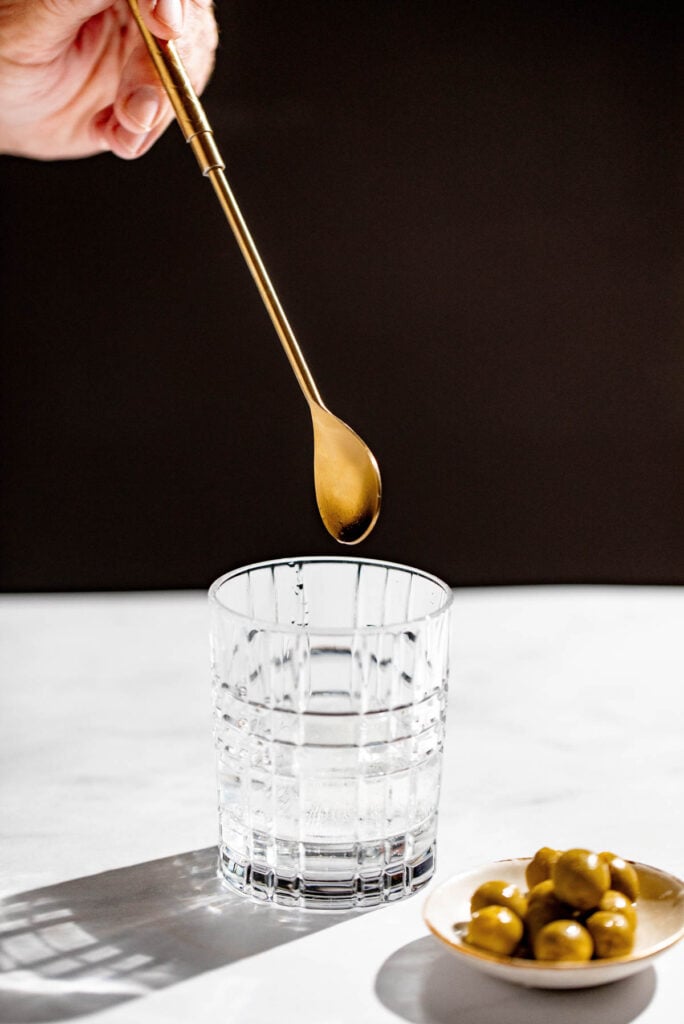
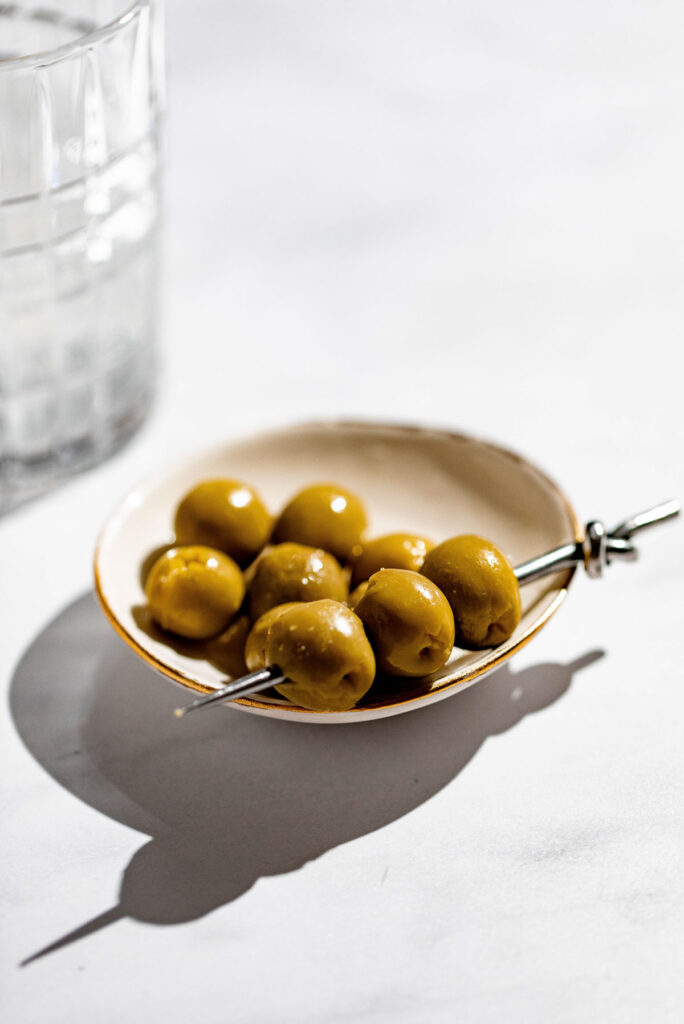
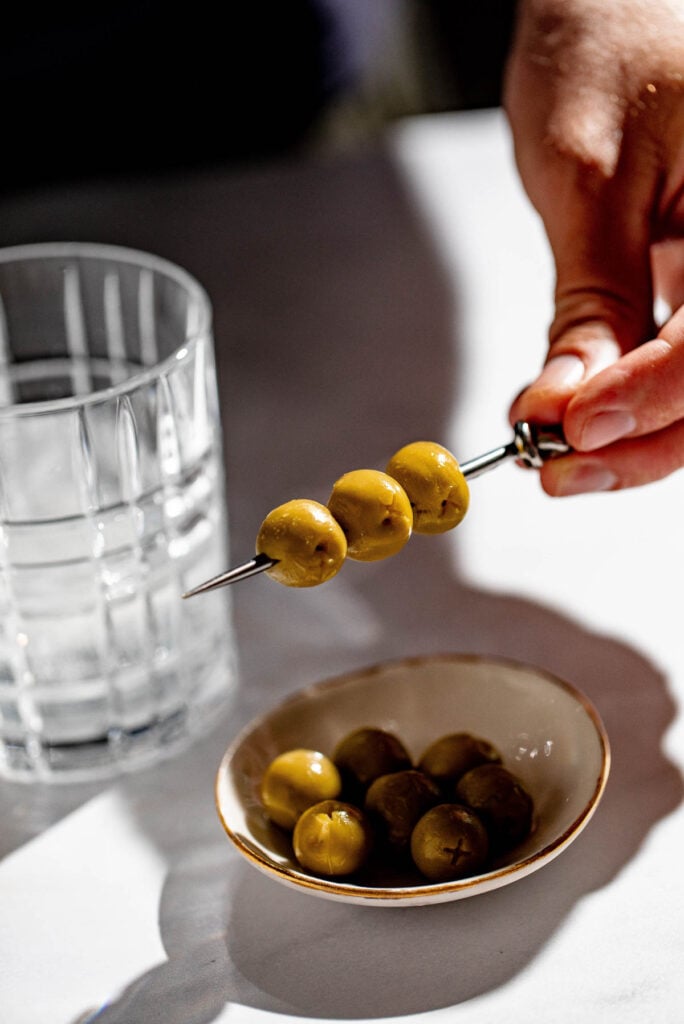
Expert Recipe Tips
- This is gospel for any martini, but especially a dry one. Use high-quality gin that’s been chilling in the freezer for a few hours. Pre-chill your martini glasses, too, either by filling them with ice and water for a few minutes or bypopping them in the freezer for a quick frosty welcome to your drink.
- Shaken, not stirred? Not for a dry martini! Shaking introduces air and bruises the delicate botanicals of your gin. Instead, use a bar spoon to gently stir your gin and vermouth with ice for about 30 seconds. This ensures a beautifully chilled and silky smooth drink.
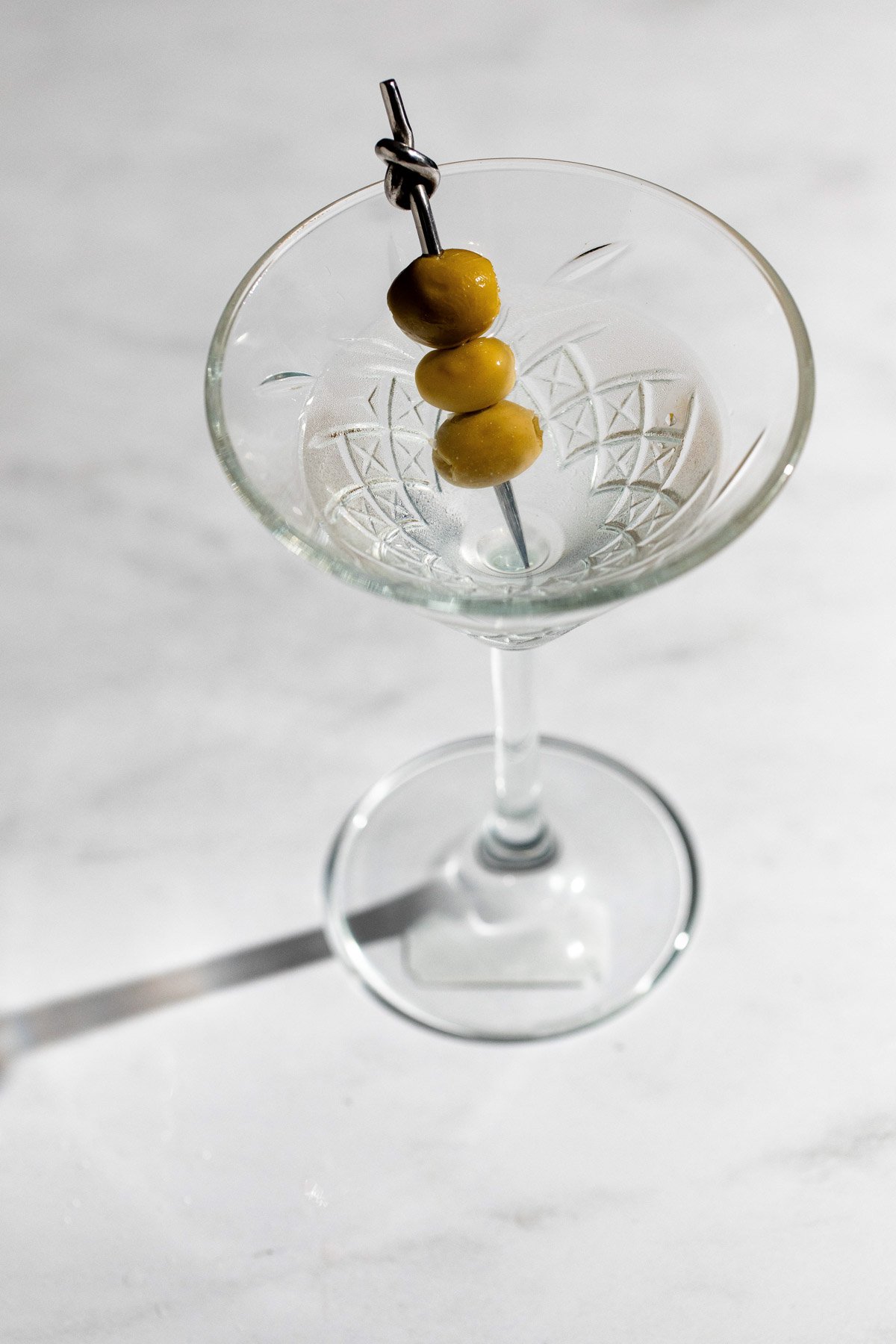
How to serve this cocktail
Strain your dry martini into a chilled martini glass, then garnish with a twist of lemon or a single elegant olive for a touch of sophisticated flair.
More Cocktail Recipes
And there you have it – a dry martini crafted with the precision of a Savile Row suit. This is a cocktail for martini purists, a celebration of clean lines, botanical brilliance, and a touch of sophisticated dryness. If you try this recipe, please rate the recipe card and leave a comment down below to help out the next reader!
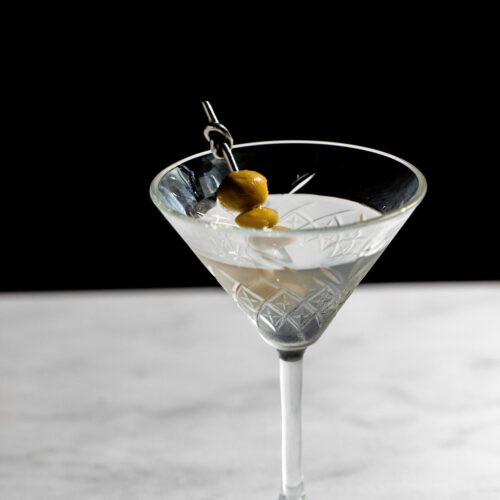
Dry Martini Recipe
Equipment
- alcohol measuring cup known as a jigger
- Stirring spoon
Ingredients
- 3 oz Dry gin
- 1 oz Vermouth
- Green olives - for garnish
Instructions
- Add ice to a mixing glass or cocktail shaker and add gin and vermouth.
- Stir until chilled.
- Strain into a martini glass and serve with green olives.
Video

Nutrition
Nutritional informations provided as a courtesy and is only an approximatation. Values will changes based on ingredients used.
⭐ Tried this recipe? Rate it ⭐
Help out the next person and give it a star rating below!

